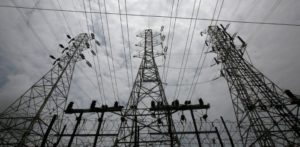It cannot happen because political parties need discoms to run their populist schemes of subsidised power

A major plank of the Electricity (Amendment) Bill (EAB), 2021, is to de-license the electricity distribution business, bring in competition, and give the consumer power to choose her supplier (‘open access’). This is easier said than done. It has to do with the fundamental weakness of State-owned and controlled power distribution companies (discoms), who will come under greater stress if private players also get involved.
What makes discoms weak? The states order them to sell electricity to poor households and farmers at a fraction of the cost of purchase and distribution, or even free. On units sold to them, discoms incur huge under-recovery. This is aggravated by aggregate technical and commercial (AT&C) losses — mostly theft. Inflated tariff, allowed to producers under a cost-plus formula, exacerbates the revenue shortfall.
At the same time, using their monopoly position under the existing dispensation, they charge high tariffs on supplies to industries and businesses, which helps them trim the shortfall. Now, if private players also enter the fray, offering lower tariff (as they don’t carry the baggage of low-paying customers, theft and inefficiencies), industries and businesses will shift to them, resulting in huge loss of revenue to discoms, even threatening their survival.
Last year, due to Covid, many businesses were shut, and hence did not draw power from discoms, causing huge loss to the latter. Imagine what would be their fate if they were to lose these customers permanently. No wonder, moves to let the private sector in have faced roadblocks from the word go.
First, under the amended Electricity Act (2003), there was a provision for ‘open access’, which gave choice to bulk consumers (consumption >1 MW) to choose their supplier. But, another provision in the Act required such customers to pay an ‘open access surcharge’ (OAS) to the discom that they wanted to leave. By fixing the surcharge at a high level, they ensured that post-switch, the effective cost of power – tariff charged by the new supplier plus OAS – is higher than what they hitherto paid to the discom. That rendered the switch uneconomical!
Second, the direct benefit transfer (DBT) of subsidy has been on the Modi government’s agenda since 2017. Under it, the state government gives subsidy directly to the target beneficiaries even as the supplier is free to fix tariff taking into account the cost of purchase, wheeling and distribution. This will free discoms from having to supply power to farmers/households at subsidised rates (or free); hence, no under-recovery. There won’t also be any reason then for them to charge more from industries and businesses.
To ensure that discoms don’t take consumers for a ride and we get the best results from this major reform, private firms should be allowed in the distribution business. But the government is silent on this crucial link, though it has included DBT in EAB, 2021. Meanwhile, following protests from farmers, it has promised that they will continue to get subsidised or free power – riding piggyback on discoms. Logically, it will keep the same arrangement for extending subsidy to households as well. Hence, even DBT is off the table.
Third, at present, almost the entire infrastructure for transmission, wheeling and last-mile delivery of power is owned and controlled by discoms. For other suppliers to come in, this infrastructure needs to be stripped from the discoms and vested in an independent entity. All suppliers should have access to it on ‘common carrier’ principle in a transparent and non-discriminatory manner. But we don’t see any discernible moves being made in this direction.
Moreover, the states which had under the Electricity Act (2003) made the switch to a new supplier uneconomical by charging high OAS, will not allow this historical advantage of discoms (read: monopoly over the infrastructure) to go away so easily.
Fourth, over 95% of the power supply in India is tied to power purchase agreements (PPAs) that discoms have with producers – mostly long-term, extending up to 25 years. So, any scope for churning by inducting private players could arise only after the existing agreements expire. Till then, it will be status quo.
Undeterred by no progress thus far, Union Power Minister R K Singh has alluded to penalising states that put hurdles in the way of privatisation. The penalties include denial of extra borrowing limits, non-release of funds under ‘Reforms-Linked, Result-Based Scheme for Distribution’ (RLRBSD), cap on hike in tariff, linking payment by discoms to LoC (letter of credit), etc. But, on ground zero, none of these riders work, even as the discoms manage to receive financial support from the state or its agencies by hook or crook.
To conclude, de-licensing and privatisation of the electricity distribution business are still many months, if not years, away. They won’t happen as long as political parties chase their populist and short-term goal of giving cheap/free electricity to the people who matter in elections (farmers, households) and use State-owned and controlled discoms to achieve it.
(The writer is a Delhi-based policy analyst)
https://www.deccanherald.com/opinion/in-perspective/privatising-power-distribution-a-hoax-1031104.html